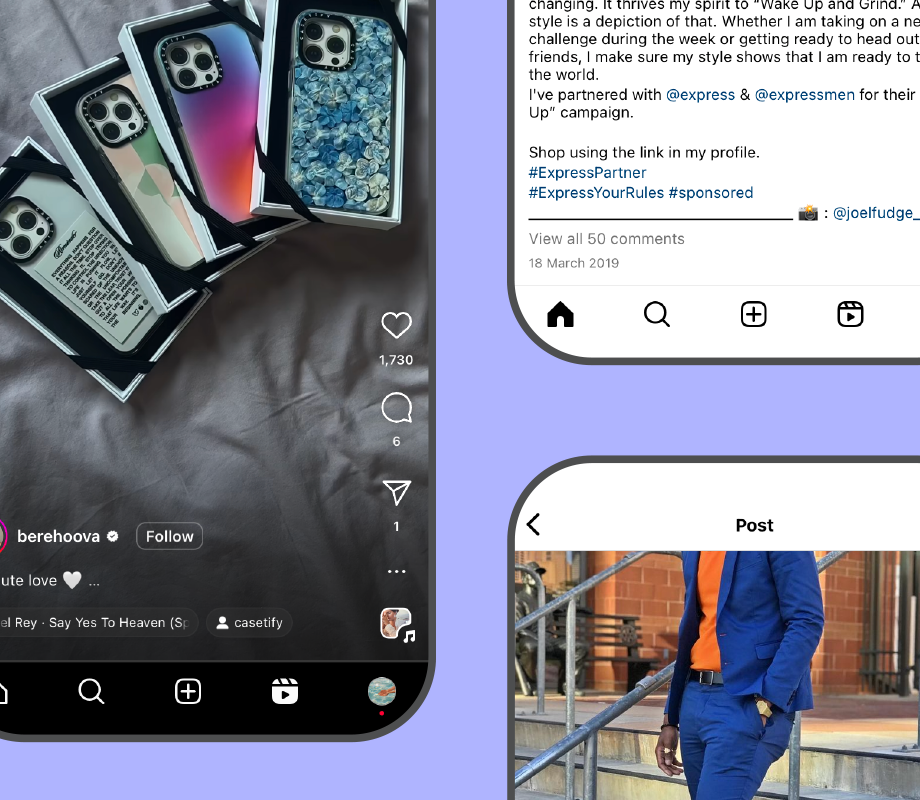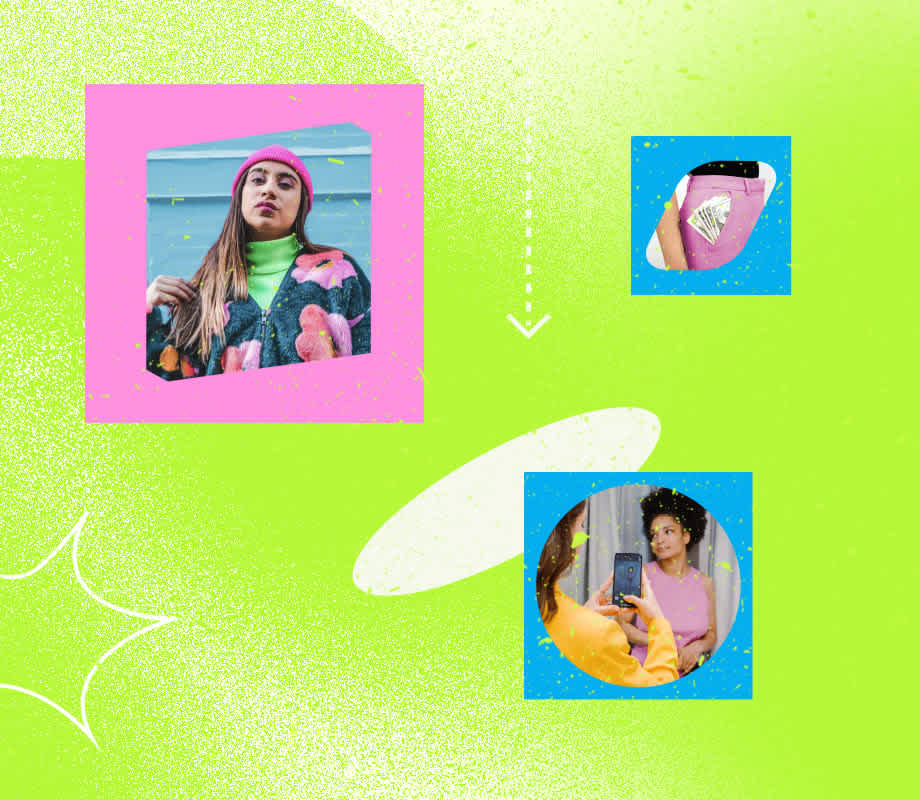Today’s marketers are investing in influencer marketing more than ever.
And for good reason — brands are earning an average of $4.87 for every $1 spent on campaigns.
With an ROI that strong, it’s no wonder influencer marketing has become a go-to strategy for brands across industries.
Want to get in on the action? We’re sharing our favorite influencer marketing campaigns (and what makes them work) to inspire your next collaboration.
Table of Contents
What Is an Influencer Marketing Campaign?
An influencer marketing campaign is a collaboration where an influencer creates content for (or on behalf of) a brand.
By delivering promotional content in an authentic way, influencers help drive credibility, awareness, and ultimately — revenue.
What Makes a Great Influencer Marketing Campaign?
Great campaigns don’t just happen overnight. The best influencer marketing campaigns:
Use clear messaging: Content should help guide your target audience to the next step in the customer journey.
Have measurable goals: SMART goals and metrics will keep your campaigns on track.
Prioritize authenticity: Partnering with influencers who align with your brand is a must for building trust with your audience.
FYI: Later Influence™ is an influencer marketing platform trusted by enterprise brands to source and manage relevant influencers, in just a few clicks. Learn more.
7 of The Best Influencer Marketing Campaigns
Ready to dive in? Here are seven influencer marketing campaigns worth taking notes from:
#1: Lululemon x Issa Okamoto
Lululemon might be known for their top-quality athletic apparel, but customers have taken their products beyond the gym for years.
In this campaign, creator Issa Okamoto demonstrates how their versatile products support her active lifestyle, taking her seamlessly from a run to a study session.
The result? Lululemon's audience and brand values married into a single Reel.
The takeaway: Show, don’t tell. Instead of listing your product's features, ask influencers to showcase how your brand works for them in real-time.
#2: Flying Embers x Connor Wood
Flying Embers is the latest canned cocktail to make waves online — so it only made sense to partner with internet star Connor Wood (aka @fibula) for an iconic collaboration.
The two came together to launch a brand new flavor bearing the creator's name — the Connor Wood Spicy Lime Margarita.
By creating a new product with Connor’s audience in mind, Flying Embers boosted brand awareness and sales — making this campaign one for the books.
The takeaway: Influencer marketing isn’t one-size-fits-all. This collaboration takes a creative approach, providing value to the audience while allowing the product to take center stage.
#3: Clif Bar & Co.’s Affiliate Marketing Program
Clif Bar & Co. products are a go-to for outdoor enthusiasts of all kinds. But a large, diverse audience like this can make it difficult to create content that resonates.
The brand’s winning idea?
Tapping into Later Influence, Later's influencer marketing platform, to identify and leverage top-performing partners according to their audience personas (hello, brand new affiliate marketing program).
By keeping a pulse on monthly performance in using Later's influencer analytics tools, Clif Bar & Co. is equipped to create top-notch content tailored to their audience’s preferences.
The takeaway: Continuous analysis is key. Your campaign data is packed with actionable insights to tweak, refine, and optimize your influencer marketing strategy.
TIP: Streamline creator discovery and management when you sign up for Later Influence — schedule a call to learn more.
#4: Rare Beauty Soft Pinch Lip Oil Launch
Between its celebrity founder and internet-famous blushes, Rare Beauty has perfected the art of influencer marketing.
Case in point: Their NYC launch event generated a whopping 10M+ media impressions.
Featuring interactive sampling rooms, a digital collage wall, and an appearance by Selena Gomez herself, the event was designed to encourage user-generated content from its 300 attendees.
The takeaway: Don’t underestimate the power of an IRL influencer activation. Memorable experiences are powerful for generating organic content and building long-term relationships with your brand partners.
#5: Salt & Stone x Mada Graviet
Product reviews are essential to driving sales online — 70% of online shoppers read between one and six reviews before adding to their cart.
In this social proof campaign, Salt & Stone had creators like Mada Graviet share their honest opinions about their viral natural deodorant.
What makes this one of our favorites?
The influencer speaks candidly about the product in her car, making this TikTok feel more like a FaceTime with a good friend than an ad.
The takeaway: Authenticity powers influencer marketing. When you work with influencers who are genuinely enthusiastic about your brand, you’re more likely to convert their followers into customers.
#6: Reebok & Zumiez x Eric Sierra
When Rebok and Zumiez joined forces for their first-ever co-branded campaign, facilitated by the Later Influence Services team, they had to find influencer partners that captured both of their unique brand identities.
By collaborating with Gen Z creators like Eric Sierra, they successfully tapped into a shared audience of over 1.3M, driving almost 1 million impressions!
The takeaway: Don’t be afraid to target a younger demographic. A staggering 85% of Gen Zs agree social media influences their purchase decisions, according to a 2023 report.
#7: Parade's Affiliate Program
Underwear brand Parade is proof that a well-executed campaign has the power to boost your bottom line.
The key? Make the point of purchase as simple as possible for your audience.
With clear CTAs and unique discount codes for influencer partners, the opportunity for Parade is two-fold — boosted sales and easily trackable performance.
The takeaway: Invest in affiliate marketing. It's the ultimate hack for cost-effective, continuous leads.
Whether you're looking to drive purchases or build hype for an upcoming launch, an influencer marketing campaign can help you achieve (and exceed) your goals.
The best part? You don’t need a big budget or mega-following to get results.
With the right strategy (and these examples top-of-mind), you're equipped to crush your influencer marketing campaigns again and again.




